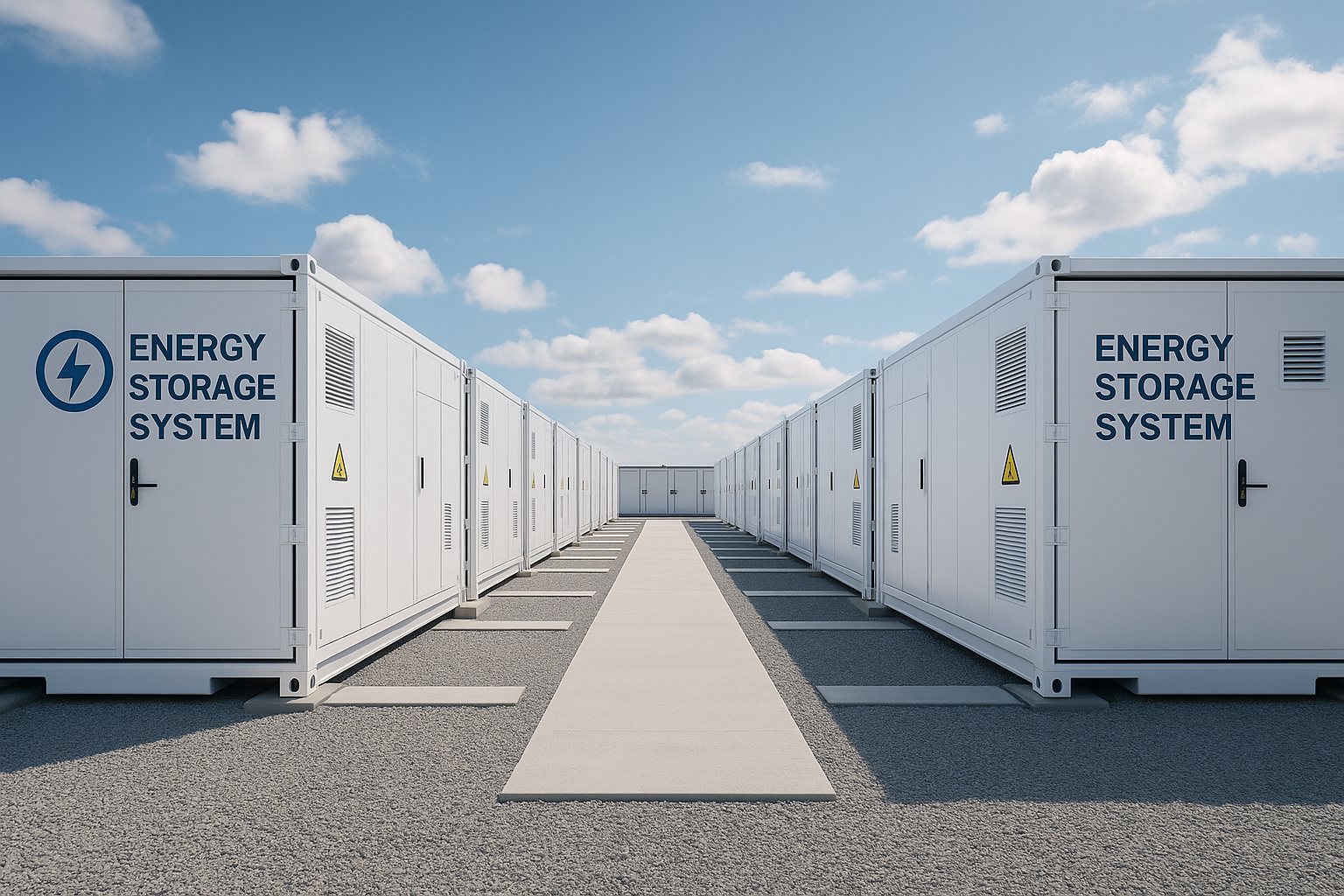
This article is Part 2 of our Battery Market Outlook series. If you haven’t read Part 1 yet, catch up here: Electric Vehicle Market Trends: Outlook, Obstacles & Opportunities.
As the global energy market evolves, the conversation is shifting away from electric vehicles (EVs) toward grid-scale storage, home energy solutions, and materials innovation. In this second installment, we explore the rising importance of next-gen battery technologies, the role of material processing, and how AZO is supporting innovation across the energy ecosystem.
Why the Focus Is Moving Beyond EVs
While EVs once captured the imagination of consumers and investors alike, recent trends indicate a plateau in demand. Market feedback shows that many battery manufacturers are pivoting to focus on energy storage systems (ESS) for homes, grids, and renewables.
So what’s driving this transition?
-
Slower EV growth than projected across U.S. and EU markets.
-
Material scarcity, especially materials used in batteries such as lithium, cobalt, and nickel and rare earth materials used in motors.
-
The explosion of energy consumption driven by AI infrastructure.
-
Demand for cost-effective, scalable storage.
As a result, new energy applications are gaining ground, and they require battery designs that prioritize stability, longevity, and affordability over compact size or fast charging.
Inside Next-Gen Battery Innovation
Next-generation batteries are not just an evolution. They represent a divergence from traditional lithium-ion designs.
What are iron-air batteries and why are they important?
Iron-air technology is at the forefront of new energy innovation. Unlike lithium-ion batteries, iron-air batteries generate electricity through the oxidation (rusting) of iron.
- Abundant material: Iron is cheap, widely available, and environmentally safe.
- Reversible process: The battery is “recharged” by converting rust back into iron.
- Scalable form factor: Units are built into cargo containers, perfect for solar farms and wind installations.
These batteries are designed to power entire communities or support national grids.
Other emerging chemistry technologies include:
- Salt-Iron (NaCl-Fe): Uses salt and iron, requiring precise moisture control during production.
- Sodium-Ion Batteries: Offer an alternative to lithium with similar structural chemistry.
- Solid-State Batteries: Still under development, these promise enhanced safety and energy density but have seen slowed progress.
Each of these technologies prioritizes non-reliance on critical elements, a key trend as China continues to dominate global graphite, cobalt, and lithium supplies.
Material Processing: The Engine Behind Innovation
What makes these new battery types possible is how the materials are handled and processed. AZO is playing a vital role in this space by enabling manufacturers to precisely prepare the powders and binders needed for high-performance batteries.
How does AZO support new energy companies?
AZO contributes across multiple stages of the battery development lifecycle:
- Milling tests: Reduce particle size to improve energy output.
- Mixing trials: Ensure consistent blending of active and inactive materials.
- Drying processes: Remove moisture to exacting specs (e.g., from 2% to 0.02%).
- Pilot and production scaleups: From grams to hundreds of kilograms.
This support allows developers to refine performance, scale production, and reduce time-to-market, all while improving quality.
From Startups to OEMs: A Shift Toward Turnkey Solutions
A major theme in the new energy space is the emergence of startups backed by institutional investors and research labs. These companies are highly agile in R&D, focused on scalable innovation, and in need of reliable partners to support growth. Rather than piecing together equipment from multiple vendors, many now seek integrated solutions - a niche that AZO fills exceptionally well. We offer one system that works for your process.
Looking Ahead: The Future of New Energy
So, where is the market heading in 2026 and beyond? Even as regulations shift and technology evolves, one thing is clear: the need for energy storage is only increasing, especially with the rise of AI data centers and next-gen smart grids. We’re also seeing:
- EV battery growth is slowing, particularly in North America and Europe.
- Grid storage and residential energy systems are expected to grow rapidly.
- Iron and salt-based chemistries are gaining traction for their cost and availability.
- Battery companies want total process partnerships, not just components.
What About Battery Recycling?
Battery recycling once dominated headlines but has since cooled. Several factors have contributed, like the rise of non-lithium chemistries, and the safety and cost challenges associated with recycling. That said, recycling remains important. As battery diversity grows, so too will the need for chemistry-specific recycling processes.
The battery market is no longer focused solely on cars; it has expanded to power our future. From iron-air storage to ultra-dry salt-based systems, next-gen batteries are poised to revolutionize how we think about energy.
AZO is proud to partner with pioneers in this field, offering deep expertise in material handling and equipment integration to bring these innovations to life. Whether you're optimizing a pilot line or scaling to full production, AZO is equipped to help you move faster, cleaner, and smarter. Connect with us to explore how our turnkey solutions can power your next breakthrough in battery manufacturing.

